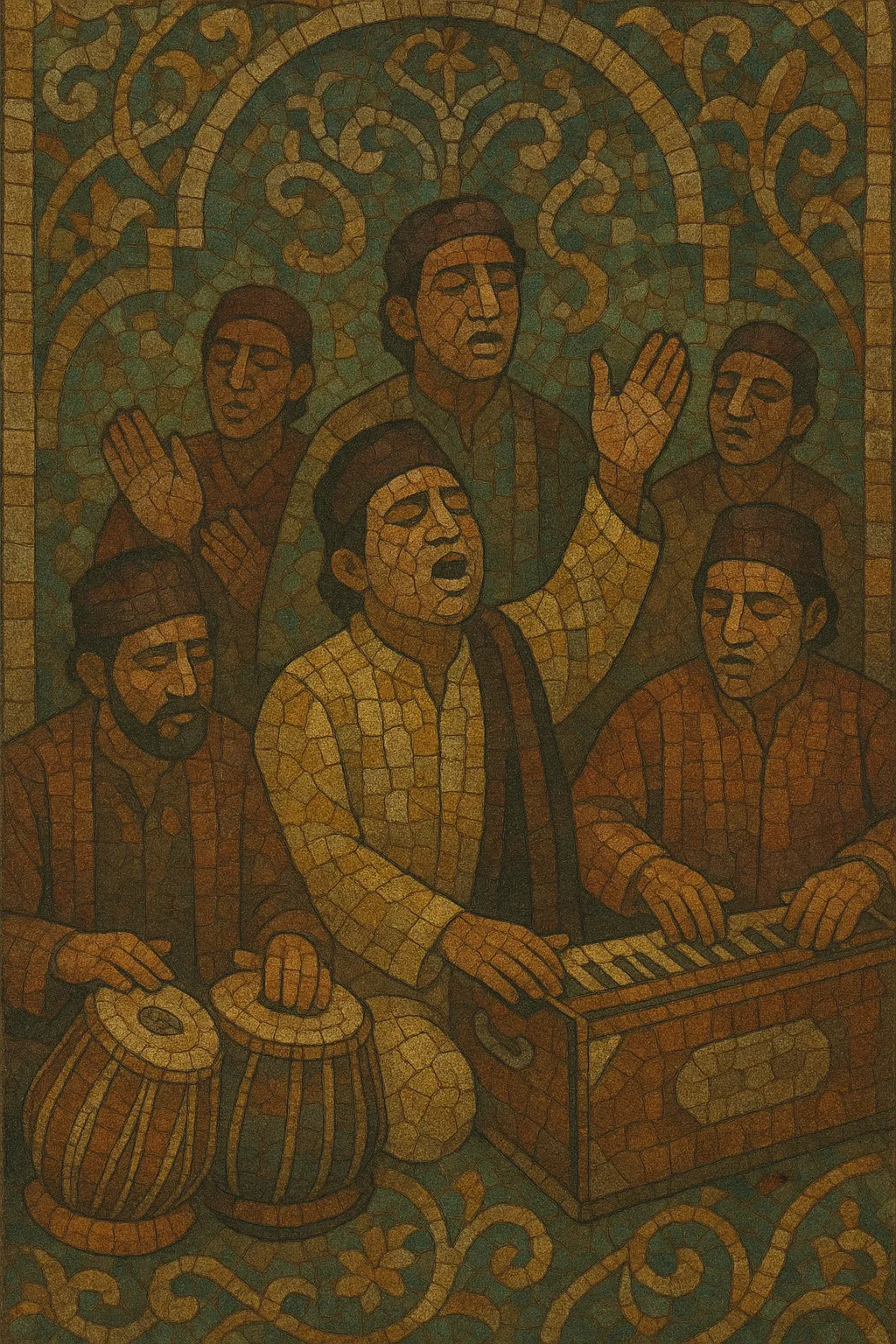Qawwali is a Sufi devotional vocal music from the Indian subcontinent that aims to evoke spiritual ecstasy and communal devotion. It is typically performed by a lead singer (qawwal) with a small ensemble of accompanying vocalists, harmoniums, handclaps, and percussion such as dholak and tabla.
Musically, Qawwali blends raga-based melodic frameworks and flexible, improvisatory singing with driving rhythms and responsorial choruses. Texts are drawn from Urdu, Persian, Punjabi, and other North Indian languages, and include ghazals, kafis, hamds (praise of God), naats (praise of the Prophet), and manqabats (praise of Sufi saints).
Performances traditionally take place at Sufi shrines (dargahs), where repetition, call-and-response, and gradual intensification lead listeners toward wajd (states of spiritual ecstasy). In the modern era, Qawwali is also heard on concert stages, recordings, and film.
Qawwali is widely associated with the 13th-century Delhi court poet and musician Amir Khusrow, who synthesized Persian, Arabic, Turkic, and local Hindustani elements within the devotional culture of the Chishti Sufi order. Early practitioners shaped a participatory musical ritual designed to convey mystical poetry and induce spiritual states.
Under the Mughal Empire, Qawwali was cultivated both in courtly and shrine contexts. Ensembles refined a repertory of Persian and Hindavi/Urdu texts and stabilized performance practices—lead-and-chorus textures, handclaps articulating tala cycles, and improvisational vocal flights within raga-like modal frameworks.
With the advent of recording, radio, and cinema, Qawwali moved from shrine courtyards to mass media. “Filmi qawwali” numbers popularized the style for broader audiences. In Pakistan and India, iconic parties such as the Sabri Brothers and Aziz Mian carried the tradition forward, maintaining devotional intensity while adapting to microphones, studios, and stages.
Nusrat Fateh Ali Khan’s international collaborations in the 1980s–90s brought Qawwali to global listeners, influencing worldbeat and world-fusion scenes. In the 21st century, artists like Rahat Fateh Ali Khan, Fareed Ayaz & Abu Muhammad, and Rizwan-Muazzam Qawwali have balanced classical repertory with contemporary production, while platforms like Coke Studio helped introduce Qawwali timbres and forms to pop and rock audiences.
Despite modernization, the core remains devotional poetry, collective participation, and the pursuit of ecstasy (wajd). Qawwali today thrives in dargahs, concert halls, and recordings, connecting audiences to Sufi metaphysics through sound.


